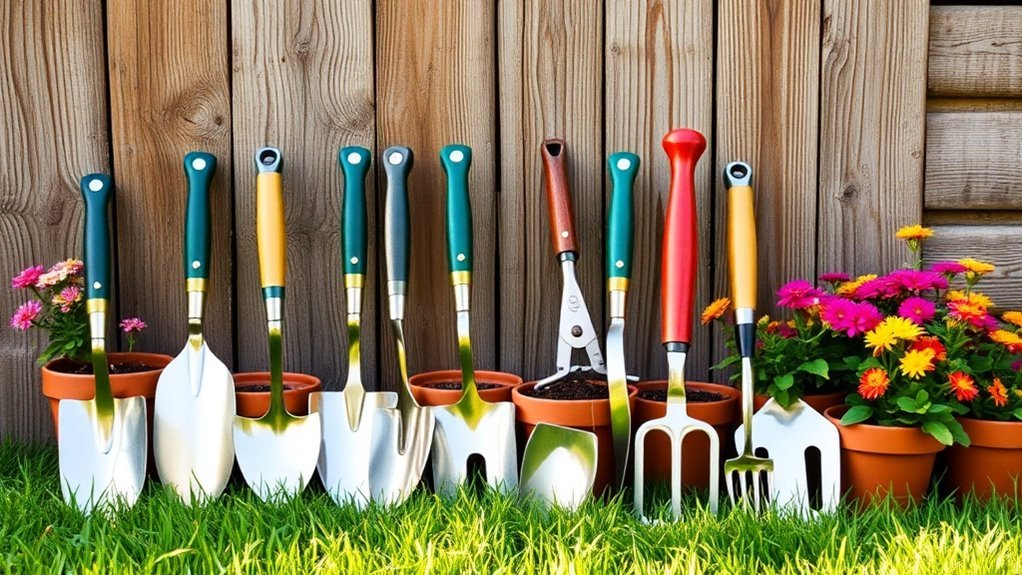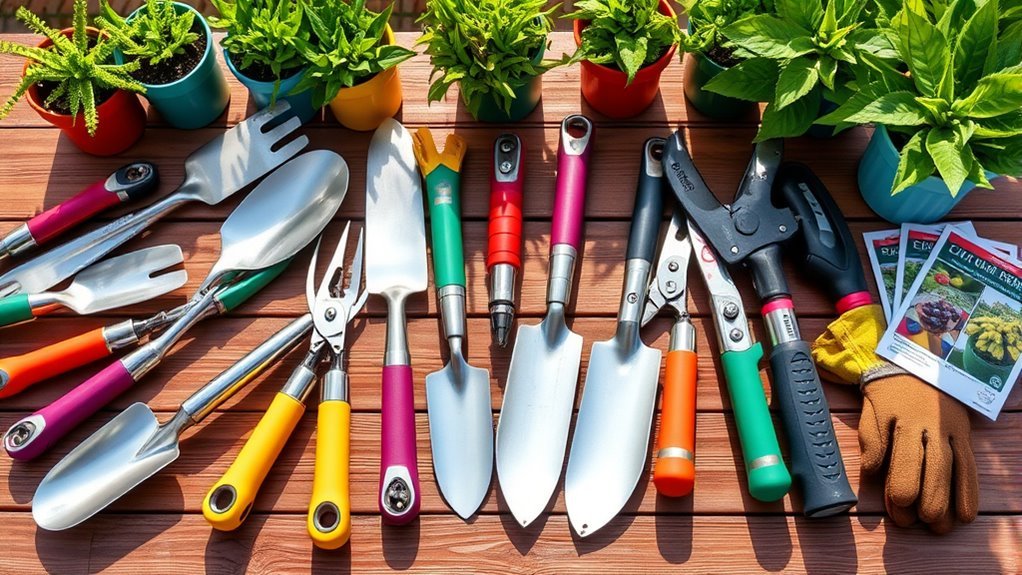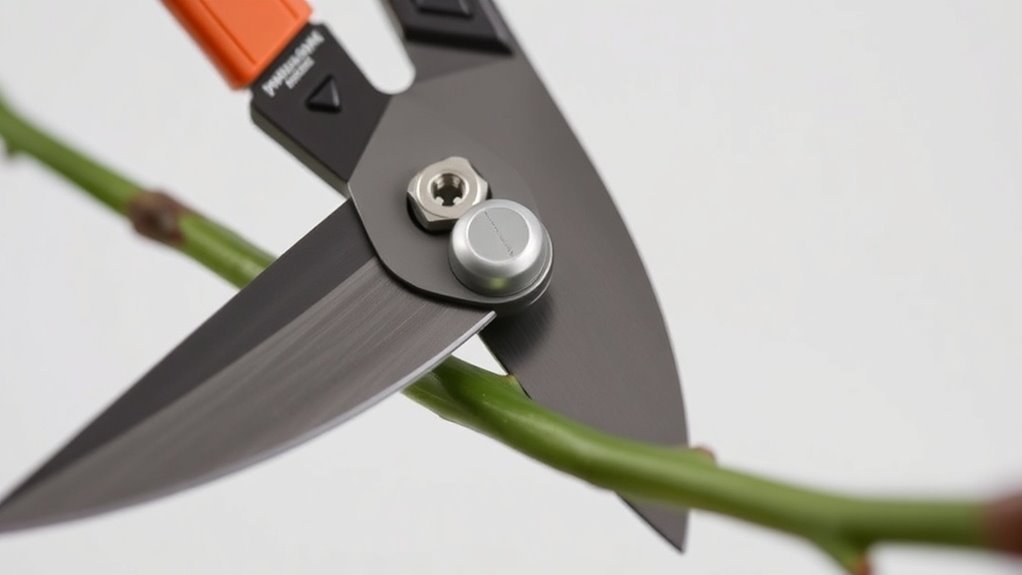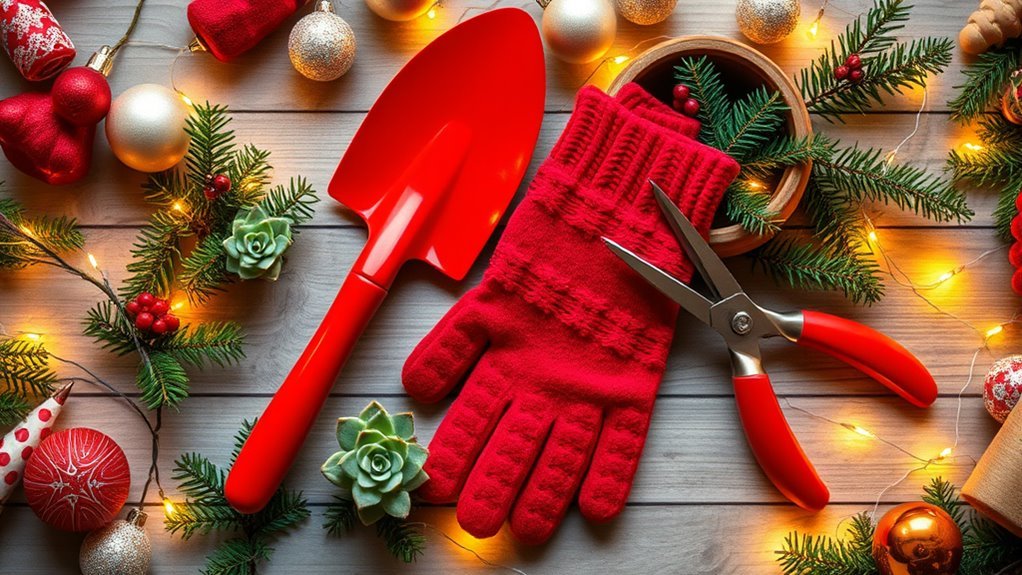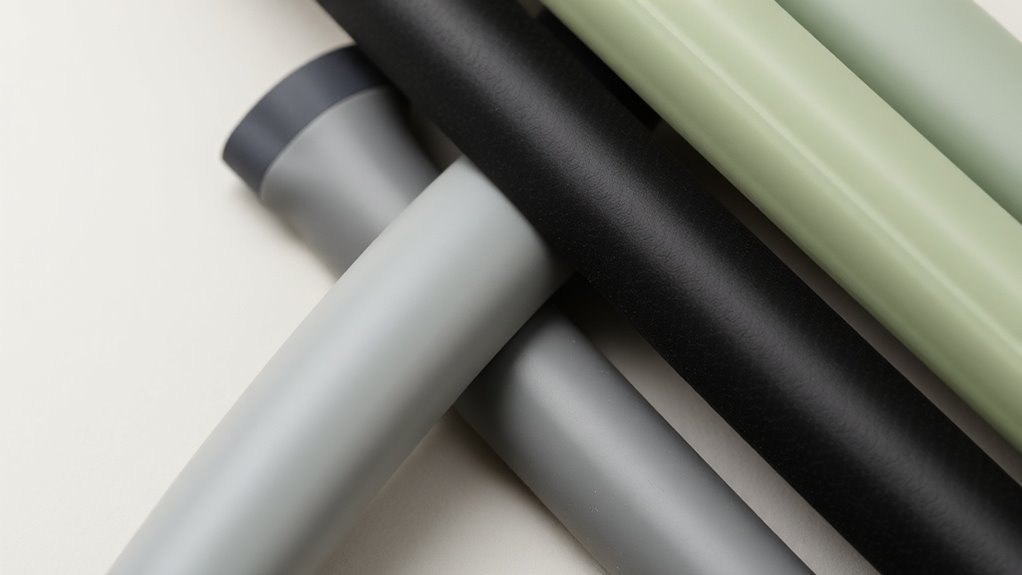Evolution of Gardening Tools Through History
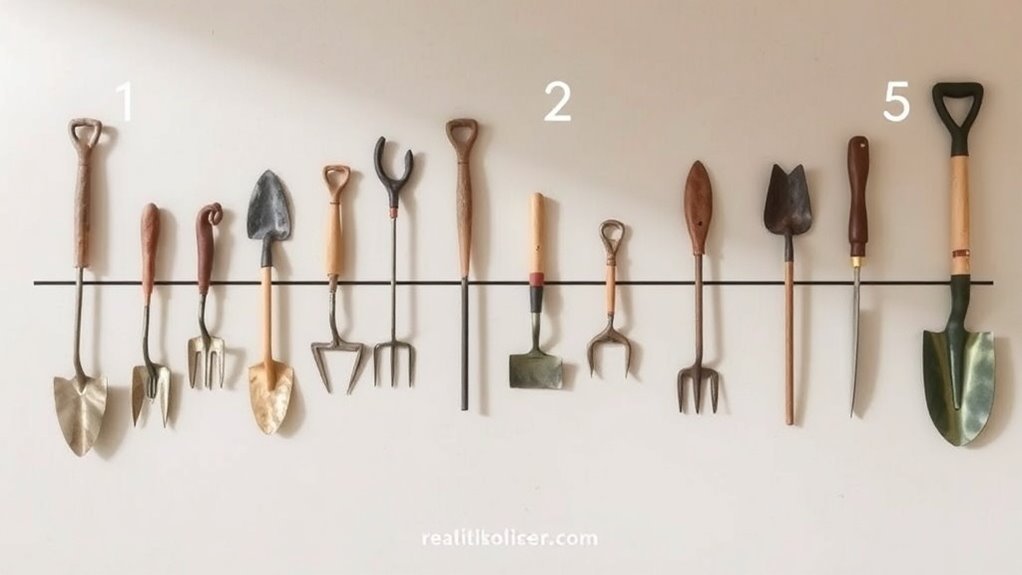
The evolution of gardening tools traces humanity’s journey from simple wooden sticks to modern tech-driven innovations. You’d find early tools made of wood and stone, leading to stronger bronze implements. The Agricultural Revolution advanced efficiency, while the Medieval Era introduced essential hand tools. Mechanization in the Industrial Revolution transformed gardening practices, and today, technology includes smart sensors and drones. As you explore further, you’ll discover even more fascinating developments in gardening tools and their impact on our lives.
Key Takeaways
- Early gardening tools were made from wood and stone, evolving into bronze implements during the Bronze Age for improved efficiency.
- The Agricultural Revolution saw the development of advanced plows and harvesting methods, enhancing soil management and crop productivity.
- Monastic gardens contributed to gardening practices by cultivating medicinal herbs and employing techniques like crop rotation for soil health.
- The Industrial Revolution introduced mechanized tools, such as tractors and seed drills, significantly improving gardening efficiency and user comfort.
- The Digital Age has brought smart tools and drones, pushing innovation further with features like automated irrigation and real-time garden monitoring.
The Origins of Gardening Tools
While people have cultivated plants for thousands of years, the origins of gardening tools reveal how human ingenuity evolved alongside agricultural practices.
Early tools were simple, made from materials like wood and stone. You’d use sharpened sticks to dig in the earth, forming the foundation of what we now recognize as gardening implements.
Over time, as farming communities grew, these tools became more sophisticated. The hoe, for instance, allowed for more effective tilling, while sickles made harvesting easier.
As farming communities evolved, tools like the hoe and sickle revolutionized gardening efficiency and transformed agricultural practices.
These innovations didn’t just increase efficiency; they transformed how you approached gardening. By creating specific tools for different tasks, your daily gardening routine became less labor-intensive, enabling more people to engage in cultivating the earth. Additionally, the emergence of seasonal maintenance tools has played a significant role in enhancing gardening practices and productivity.
The Bronze Age: Advancements in Tool Design
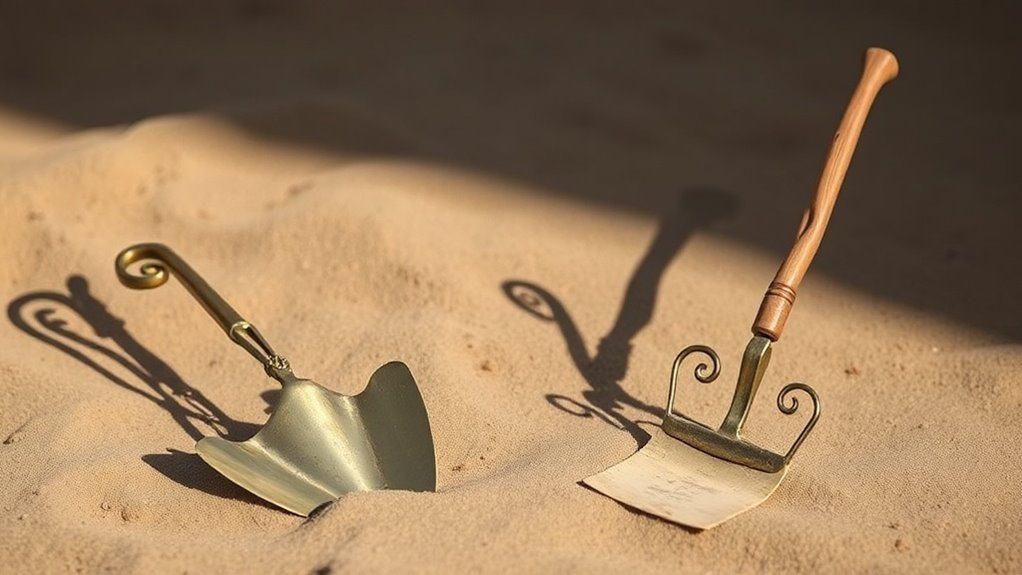
As farming practices evolved, the Bronze Age brought significant advancements in tool design that transformed gardening once again.
With the introduction of bronze metallurgy, tools became stronger and more durable. You’d find new plows with sharper metal blades, which made tilling soil much easier. Additionally, the development of bronze hoes allowed you to create more precise garden beds.
These tools were designed for efficiency, enabling you to work longer hours without fatigue. The enhanced durability of bronze also meant fewer replacements, saving you time and resources.
The Agricultural Revolution: Tools for Efficiency
During the Agricultural Revolution, you’d see remarkable changes in farming tools that made a real difference in efficiency.
Early hand tools evolved into more advanced plows, allowing for deeper tillage and better crop yields.
Additionally, new harvesting techniques emerged, transforming the way farms operated and boosting productivity. The introduction of essential tools for soil preparation further improved gardening practices by enhancing soil management and promoting healthier crops.
Early Hand Tools
The Agricultural Revolution marked a pivotal shift in human history, as early hand tools emerged to enhance efficiency and productivity in farming.
You’d find simple yet effective tools like hoes, sickles, and shovels, which made cultivating and harvesting crops easier. These hand tools changed how you interacted with the land, allowing you to manage larger plots effectively.
Hoes helped break up soil while sickles made cutting grain quicker. Each tool was designed to reduce labor and increase yields, giving rise to settled agriculture.
As you used these tools, you learned the importance of craftsmanship, leading to improved designs. The innovations of this period laid the foundation for agricultural practices, demonstrating how the right tools could transform your relationship with nature and food.
Plow Innovations
While early hand tools laid the groundwork for farming, plow innovations took agricultural efficiency to a whole new level.
You might be surprised to learn how advancements in plow design drastically changed the way crops were cultivated. The introduction of the iron plow, for instance, allowed farmers like you to penetrate tougher soils that wooden tools simply couldn’t manage.
Later, the moldboard plow further revolutionized farming by turning over soil more effectively, promoting aeration and weed control.
In the 19th century, mechanized plows made their debut, saving you valuable time and labor.
These innovations didn’t just increase productivity; they transformed agrarian societies into thriving agricultural hubs, enabling the mass production of food that still sustains communities today.
Harvesting Techniques
Revolutionizing the way crops were gathered, harvesting techniques saw significant advancements during the Agricultural Revolution.
You’d find efficient tools that did the job faster and with less effort. These improvements not only maximized output but also changed farming practices forever.
Here are some of the key methods and tools used:
- Scythe: Perfect for cutting grass or grain, making field work quicker.
- Sickle: A handheld tool ideal for harvesting small patches of crops.
- Threshing board: Used to separate grain from husks efficiently.
- Reaping hook: A time-saving tool to harvest larger crops.
- Mechanical reaper: The first step toward modern harvesting machinery, revolutionizing productivity.
These advancements made a huge difference, pushing agricultural efficiency to new heights.
The Medieval Era: Innovations in Horticulture
During the Medieval Era, gardening tools took on new forms that greatly impacted horticulture.
You’ll find innovations in farming methods alongside the crucial role of monastic gardens in shaping agricultural practices.
Let’s explore how these advancements transformed gardening during this fascinating period.
Tools of the Trade
The medieval era saw significant advancements in garden tools, with innovations that transformed horticulture for both peasants and nobility alike.
As you explore this period, you’ll discover a variety of essential tools that shaped gardening practices:
- Sickles: Curved blades for efficient harvesting of grains and herbs.
- Hoes: Versatile implements for breaking soil and cultivating crops.
- Rakes: Used for leveling soil and collecting debris or weeds.
- Spades: Sturdy tools for digging and moving earth.
- Pruning Knives: Essential for shaping and maintaining plants.
These tools not only improved efficiency but also allowed gardeners to cultivate more diverse and abundant gardens.
Whether you were a noble or a commoner, these innovations made gardening more accessible and productive.
Advances in Farming Methods
As gardeners refined their tools, they also embraced innovative farming methods that greatly enhanced productivity and efficiency.
During the Medieval Era, crop rotation became essential. You’d plant different crops in succession to maintain soil fertility and prevent diseases. The three-field system was another significant advancement; by dividing land into thirds for different crops and resting one field, you increased yields.
You might’ve also benefited from heavier plowing techniques, allowing deeper tillage and better soil aeration. Furthermore, advancements in irrigation, like ditches and waterwheels, guaranteed crops received the necessary moisture.
All these methods not only improved crop production but also transformed gardening into a more systematic and sustainable practice that laid the groundwork for modern agriculture.
Role of Monastic Gardens
Monastic gardens played a pivotal role in the innovations of horticulture during the Medieval Era. These gardens weren’t just for aesthetics; they were essential for sustenance, medicine, and spiritual practices.
Monks cultivated diverse plants that influenced gardening practices for centuries. You might be surprised by some of their contributions:
- Herbal Medicine: Monks grew a variety of medicinal herbs, laying foundations for modern herbalism.
- Crop Rotation: They implemented rotation techniques to maintain soil fertility.
- Irrigation Systems: Innovations in water management improved plant growth and yields.
- Biodiversity: Monastic gardens featured numerous species, promoting ecosystem health.
- Preservation of Knowledge: Monks documented their gardening methods, preserving agricultural knowledge through generations.
These contributions had lasting impacts on modern gardening as we understand it today.
The Industrial Revolution: Mechanization of Gardening
With the dawn of the Industrial Revolution, gardening transformed dramatically as mechanization began to take root in everyday practices. You’d notice an influx of innovative tools designed to lighten the load of manual labor.
Equipment like the seed drill and horse-drawn plows revolutionized planting, enabling gardeners to cultivate larger areas with greater efficiency. Tractors made their debut, offering unprecedented power to manage soil and harvest crops, while steam-powered machinery introduced new methods of irrigation.
This mechanical shift not only saved time but also increased productivity, allowing more people to engage in gardening as a leisure activity. As factories produced standardized tools, gardening became more accessible, marking a shift from traditional practices to a new era of efficiency and convenience.
The Rise of Modern Gardening Tools
The advancements of the Industrial Revolution laid the groundwork for the rise of modern gardening tools, making gardening even more accessible and efficient.
You can now enjoy a variety of tools designed to enhance your gardening experience. From ergonomic designs that reduce strain to lightweight materials that make handling easier, these innovations are game-changers.
- Electric tillers for quick soil preparation
- Pruners with spring-loaded mechanisms for ease
- Garden hose reels for organized storage
- Self-watering pots that simplify plant care
- Folding hand tools for compact storage
These tools not only save time but also encourage new gardeners to dig into the hobby. With modern advancements, tending to your garden has never been more enjoyable! Additionally, urban gardeners can benefit from compact planters and other innovative solutions to make the most of their limited space.
Digital Age: Technology in the Garden
As gardening evolves, technology increasingly finds its way into the garden, transforming how you nurture your plants.
Smart gardening tools, like soil sensors and automated irrigation systems, help you monitor conditions in real-time. You can easily track moisture levels or nutrient content with just a smartphone app, allowing for precise care.
Drones are also on the scene, making it easy to survey your garden from above, spotting issues you might miss at ground level.
Additionally, online resources, such as gardening forums and apps, provide you with a wealth of knowledge, tailored tips, and community support. The use of cutting tools is critical in enhancing plant health and ensuring effective care as you integrate these new technologies.
This digital integration not only saves you time but also enhances your gardening experience, making it easier to grow healthier, more vibrant plants.
The Future of Gardening Tools: Trends and Innovations
Innovations in gardening tools are set to redefine how you approach your green spaces.
With advances in technology and sustainability, your gardening experience will become more efficient and enjoyable. You’ll likely see a rise in tools designed for ease of use and environmental consciousness.
Here are some trends to watch for:
- Smart garden sensors that monitor soil moisture and nutrients.
- Robotic lawn mowers that automate grass cutting.
- Biodegradable tools made from sustainable materials.
- Ergonomically designed grips to reduce strain and enhance comfort.
- Hydroponic kits for growing plants indoors without soil.
These innovations not only enhance productivity but also contribute to a greener planet. Additionally, utilizing proper rope and cordage techniques can further support your gardening efforts, especially for creating plant supports or trellises.
Embrace these trends, and elevate your gardening game!
Questions
How Did Different Cultures Influence Gardening Tool Design?
Different cultures’ unique gardening needs shaped tool design. You’ll find that Asian cultures emphasized precision with hand tools, while European styles favored efficiency with mechanization. Each culture’s resources and techniques influenced their tools’ evolution and functionality.
What Materials Were Used in Ancient Gardening Tools?
Ancient gardening tools were made from materials like wood, stone, and bronze. You’d see wooden handles combined with sharpened stones or bronze tips, providing durability and effectiveness for various gardening tasks throughout early agricultural societies.
Are Traditional Gardening Tools Still Used Today?
Yes, traditional gardening tools are still used today. You’ll find gardeners appreciating their simplicity and reliability. Whether it’s a hand trowel or a rake, these timeless tools remain essential for cultivating plants effectively.
Which Gardening Tools Are Essential for Beginners?
In your horticultural journey, you’ll find a trowel, pruners, a spray bottle, and a rake are essential. These trusty tools’ll help you cultivate your garden with care, ensuring your plants flourish beautifully.
How Have Gardening Tool Ergonomics Evolved Over Time?
Gardening tool ergonomics have improved considerably. You’ll notice handles designed for comfort, lightweight materials reducing strain, and shapes that enhance grip. These innovations make gardening easier, letting you enjoy your time outdoors without discomfort.
Conclusion
As you’ve seen, gardening tools have evolved dramatically over time, reflecting our changing relationship with nature. From simple hand tools to advanced technology, each era brought innovations that transformed how we cultivate our gardens. As you embrace modern gardening, consider this: how will you combine tradition with innovation in your own gardening journey? The future of gardening tools is bright, and it’s up to you to shape your gardening experience in ways that resonate with your unique vision.

